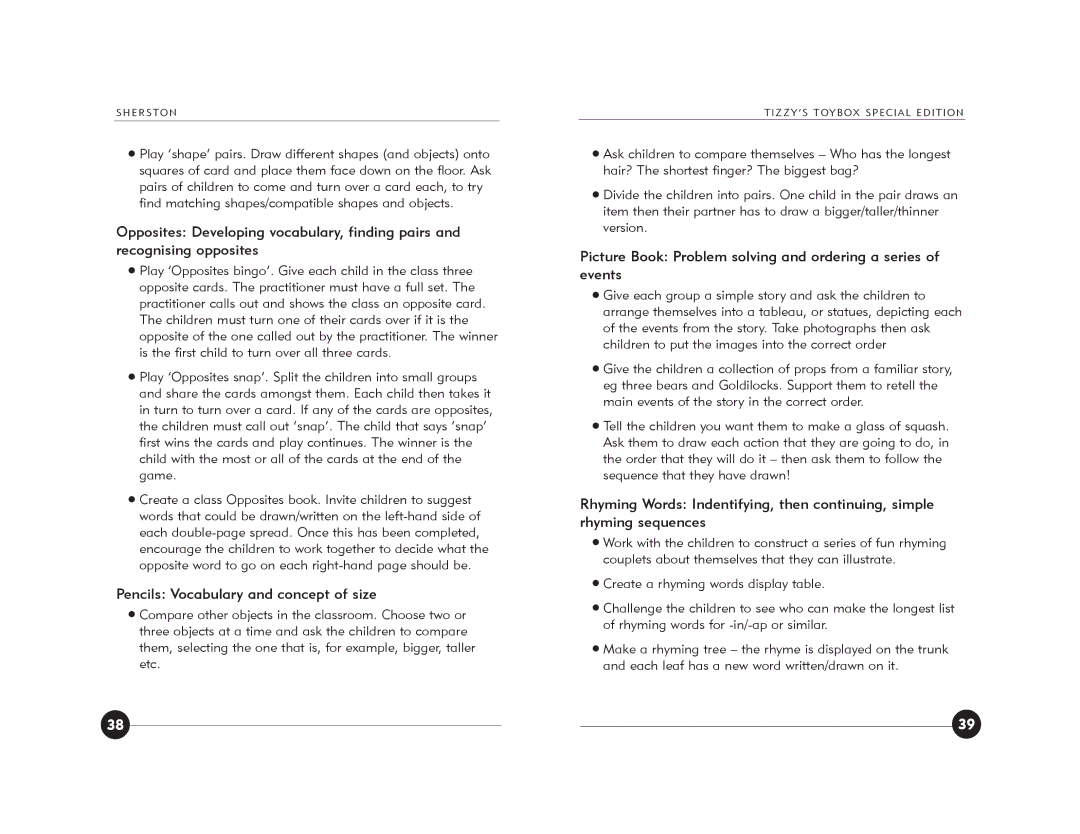
SHERSTON
Play ‘shape’ pairs. Draw different shapes (and objects) onto squares of card and place them face down on the floor. Ask pairs of children to come and turn over a card each, to try find matching shapes/compatible shapes and objects.
Opposites: Developing vocabulary, finding pairs and recognising opposites
Play ‘Opposites bingo’. Give each child in the class three opposite cards. The practitioner must have a full set. The practitioner calls out and shows the class an opposite card. The children must turn one of their cards over if it is the opposite of the one called out by the practitioner. The winner is the first child to turn over all three cards.
Play ‘Opposites snap’. Split the children into small groups and share the cards amongst them. Each child then takes it in turn to turn over a card. If any of the cards are opposites, the children must call out ‘snap’. The child that says ‘snap’ first wins the cards and play continues. The winner is the child with the most or all of the cards at the end of the game.
Create a class Opposites book. Invite children to suggest words that could be drawn/written on the
Pencils: Vocabulary and concept of size
Compare other objects in the classroom. Choose two or three objects at a time and ask the children to compare them, selecting the one that is, for example, bigger, taller etc.
TIZZY’S TOYBOX SPECIAL EDITION
Ask children to compare themselves – Who has the longest hair? The shortest finger? The biggest bag?
Divide the children into pairs. One child in the pair draws an item then their partner has to draw a bigger/taller/thinner version.
Picture Book: Problem solving and ordering a series of events
Give each group a simple story and ask the children to arrange themselves into a tableau, or statues, depicting each of the events from the story. Take photographs then ask children to put the images into the correct order
Give the children a collection of props from a familiar story, eg three bears and Goldilocks. Support them to retell the main events of the story in the correct order.
Tell the children you want them to make a glass of squash. Ask them to draw each action that they are going to do, in the order that they will do it – then ask them to follow the sequence that they have drawn!
Rhyming Words: Indentifying, then continuing, simple rhyming sequences
Work with the children to construct a series of fun rhyming couplets about themselves that they can illustrate.
Create a rhyming words display table.
Challenge the children to see who can make the longest list of rhyming words for
Make a rhyming tree – the rhyme is displayed on the trunk and each leaf has a new word written/drawn on it.
38 | 39 |
